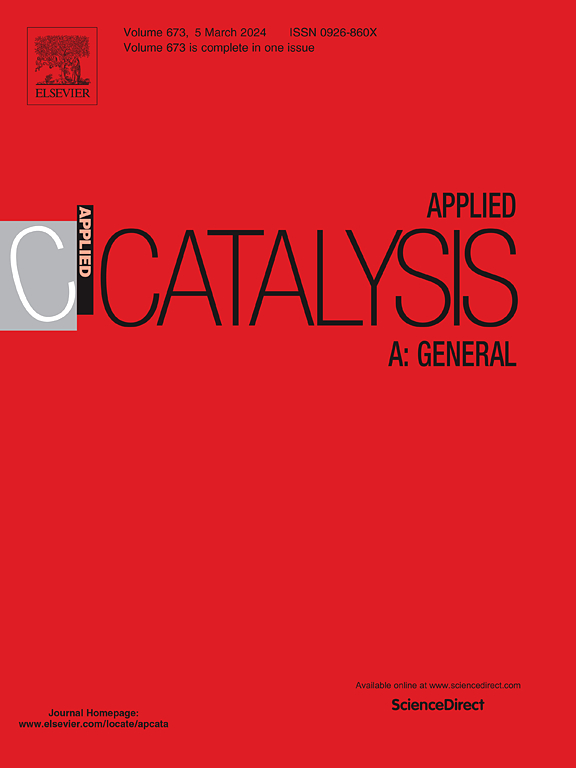CO2 hydrogenation over rhodium cluster catalyst nucleated within a manganese oxide framework
Abstract
Rhodium-based manganese oxide frameworks were explored as a prototype for carbon dioxide reactive capture and conversion. Three-dimensional frameworks of MnOx were utilized as support structures to isolate Rh metal centers. V, Na, and Zn were introduced as counterions to stabilize the structure and for their beneficial effect as promoters. With this multicomponent catalyst, Rh active centers with MnOxs and varied counterions, we were able to selectively tune the catalytic performance of the material via the choice of counterion and structure of the host material. With cryptomelane-type tunnel manganese oxides octahedral molecular sieve (OMS2), we found that Rh-V-OMS2 was highly stable even after 48 hours on stream with a reaction rate of around 1.5×10−4 mol CO2/gRh/s, surpassing the net reactivity of other initially more active combinations. Furthermore, during CO2 hydrogenation, in situ XAFS showed that single Rh atoms nucleated into nanoparticles/ sub-nanometer clusters with a coordination number of 5.5 or less. Our finding of the correlation between the reaction rate and particle size offers the potential for enhanced control over the reaction rate by tuning particle size. Our activity study with control experiments demonstrates that the activities of the catalysts are proved due to the unique metal support interaction offered by the Rh-X-MnO.

 求助内容:
求助内容: 应助结果提醒方式:
应助结果提醒方式:


